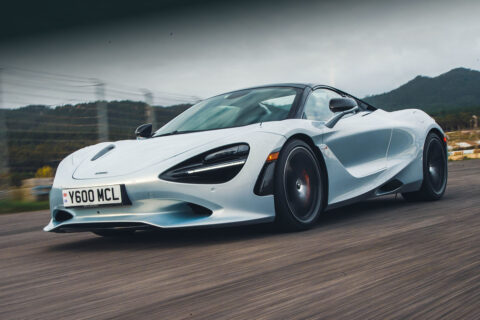It’s a new name that, in reality, denotes rather a light facelift. Just how light becomes clear when we first clap eyes on the 750S in the pit lane at Estoril, where the car is being launched (and with 533bhp per tonne, the scope of an ex-Formula 1 circuit is warranted).
Compared with the 720S, the ‘eye socket’ orifices for the headlights have been closed up a touch and the body-coloured bumper is more expansive, being lower-reaching and looking altogether more slippery. Along the flanks, the intakes at the base of the door apertures are marginally broader.
At the back, the air brake is larger, having been filched from the McLaren 765LT, that hardcore track-day special, and the grille has been restyled.
The exhaust now has a raised central outlet similar to that of the mighty McLaren P1, now a decade old but still extraordinary. Up close, the 750S looks spectacularly exotic, but overall the sinewy yet voluptuous and faintly organic form of the 720S is perhaps a little too familiar.
It’s a similar story inside, but given the ultra-light carbonfibre monocoque is unchanged and all of the engineering hardpoints are therefore carried over, that is to be expected.
It remains a superb cockpit, on the one hand engendering a captivating sense of light and space and on the other plumbing you firmly into the machine. No other supercar does this so successfully. McLaren has also stiffened up the engine mounts for no other reason than to better connect the driver with the engine.
This being McLaren, there are optimisations elsewhere. The electrohydraulic steering rack’s ratio is increased, giving direction changes a touch more bite and, on the road, a palpably heavier action at low to medium speeds (many will like that, although some will find it unnecessary).
The 10-spoke wheels are forged aluminium and the lightest ever fitted to a production McLaren, saving 13.8kg all round. New spring and damper units save 2kg.
The suspension modes have also been tuned to offer greater disparity between Comfort, Sport and Track (chief engineer Sandy Holford says Track should be essentially unusable on the road).
Finally, there’s a new brake booster to maintain pedal consistency. And you can add the six-piston monoblock front calipers from the McLaren Senna.
